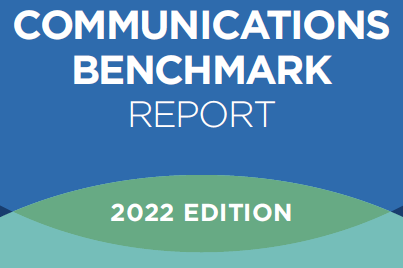Corporate communicators hope for more help, Ragan survey shows
Buckle up: Your to-do list just got bigger.

If I’ve heard it from one communicator, I’ve heard it from a thousand: There’s too much to do, too little time and not nearly enough people to get it all done.
As Joe Biden likes to say, that’s not hyperbole. Ragan Communications actually asked a thousand communicators to share their views on their jobs, their biggest challenges, what’s working and what’s not. It’s all in the 2022 edition of Ragan’s Communications Benchmark survey, and you can download the executive summary.
There’s a lot of good stuff in this report. Here are four takeaways to get you started:
1. Get well, be well. After more than two years of a pandemic, social unrest, economic upheaval and all the rest, we can draw one big conclusion: Everyone’s tired. As in exhausted.
It’s easy to underestimate what you can’t immediately see. Stress can wear you out. We’ve all been running on adrenaline for more than two years and are just beginning to see the long-term effects on our physical and mental health. That’s why wellness is now a top priority for so many organizations, from employee support groups to flex hours and increases in mental health and other assistance.
Letting employees know what’s available to them — and providing a platform for people to share how they’re feeling — is a must-do for communicators.
Two-thirds of those surveyed said their companies have increased wellness support in the past year.
2. I need a hand. Communications teams have always been lean. I’ve yet to meet a communicator who didn’t want another writer, a multimedia producer or a social media strategist. Make that two more hands. Of those surveyed, 40 percent work in comms teams of no more than five people.
Adding staff helps, for sure, but to be effective, teams have to work collaboratively, as an integrated unit across the different functions. Silos are for storing grain, not people. When communications are integrated, better things happen:
- Every topic and issue gets the full attention of the comms team. Can an internal story be of interest to an external audience? Will a social media post draw engagement from your own employees? Is your complicated sustainability report gaining traction among employees, customers and the news media?
- Lose the silos to avoid duplication, or worse, contradiction. Do your press releases match your internal messaging? Are you making news in the public arena before telling your employees? (Note: They hate that.) Is your news timely and consistent?
In the survey, 55% of respondents said they’d hire another comms staffer if given the budget, and 59% said their communications function is integrated.
3. More alphabet soup. As much as communicators hate acronyms, they’re spending more time on two big ones: DE&I (Diversity, Equity & Inclusion) and ESG (Environmental, Social & Governance). Both present barriers to effective communications:
- For too many years, diversity was consigned to cheesy features tied to (Fill-in-the-blank) Awareness Month. But DE&I really took center stage after George Floyd’s murder and the push for a greater sense of belonging among all employees. The harder part is to make meaningful change, measure your progress and tell that story, internally and externally.
- And just when you were getting a handle on DE&I comes this other baffling word combo. ESG was once firmly packed inside the silo known as Investor Relations, or Compliance. Today, your employees, customers and the news media want to hear (and read) not just about your aspirations to be a good steward of the environment and an ethical organization, but what you’ve actually done about it.
Ragan’s survey found that while 75% of communicators named DE&I as a top priority, 30% didn’t know if their organization has goals to measure against.
4. Who moved my culture? With many work-from-home and hybrid work policies still uncertain, what must change about your communications channels, your content and your editorial approach? Plenty, as it turns out. The nagging problems of old are now the challenges of new:
- Intranets. Communicators told the Ragan survey they are expecting greater investment in intranets. Can this much-maligned channel finally fulfill its promise as a true internal communications hub, no matter where you’re working?
- The cascade. Connections between managers and their direct reports, uneven at best, are more challenging than ever in a hybrid work environment. Managers need comms training, support — and incentives.
- Love it or loathe it, email remains the top channel for 78% of the communicators surveyed. The trick here is to use email more effectively, for the right content, at the right time and in a format that will get people to click.
- Thought leadership. Your leaders need help with the many ways — social, video and in-person — they can connect with employees, wherever they are, and influence external audiences.
Finally, the report underscores what every communicator knows: You can’t check anything off your to-do list without a plan to measure your progress and effectiveness. That means more measurement across the board, whether full-blown audits, improved analytics, personas or shorter, spot measurement to gauge reaction to specific events or initiatives.
Jim Ylisela is the co-founder of Ragan Consulting Group. Do you need help with your to-do list? Schedule a call with Kristin Hart to learn how we can help you improve your communications effort with training, consulting and strategic counsel. Follow RCG on LinkedIn here and subscribe to our weekly newsletter here.







